It was supposed to be the first step in their waltz to the Super Bowl, but the Green Bay Packers‘ “Last Dance” got off to one of the worst starts possible — a 35-point drubbing to the New Orleans Saints, who weren’t even playing in the Caesars Superdome.
Click here for more PFF tools:
Rankings & Projections | WR/CB Matchup Chart | NFL & NCAA Betting Dashboards | NFL Player Props tool | NFL & NCAA Power Rankings
The game — moved to Jacksonville on account of Hurricane Ida —was supposed to be a repeat of the Packers' 37-point outing last year. However, in the hot Jacksonville sun where the crowd was even with Saints and Packers fans, Aaron Rodgers and the Packers offense scored just three points due to the Saints offense's elite execution, which forced Green Bay into a negative game script that it couldn’t recover from.
The game script — meaning how ahead or behind a team is — is important for this one. On the Saints' second possession of the game, starting at 7:09 of the first quarter, they went on back-to-back 15-play touchdown drives that ate up a combined 17:51 of game time. The Packers' third possession of the game started with 1:07 left before halftime, so they finished the half running just 18 plays as the Saints went into the locker room leading 17-3.
A neutral game script would have allowed the Packers to stay with a more balanced attack but after the first quarter, Rodgers dropped back to pass 22 times compared to just three runs before Jordan Love replaced him in the fourth quarter. This is important because the Saints' game plan allowed the Packers to run the football in an effort to limit explosive plays through the air.
There has been much ink spilled lauding the breakaway approach to NFL defenses this offseason — mostly through the ways Los Angeles Chargers head coach Brandon Staley and Denver Broncos head coach Vic Fangio are heading a transformation to more two-high safety pre-snap looks. Saints defensive coordinator Dennis Allen is not far behind.
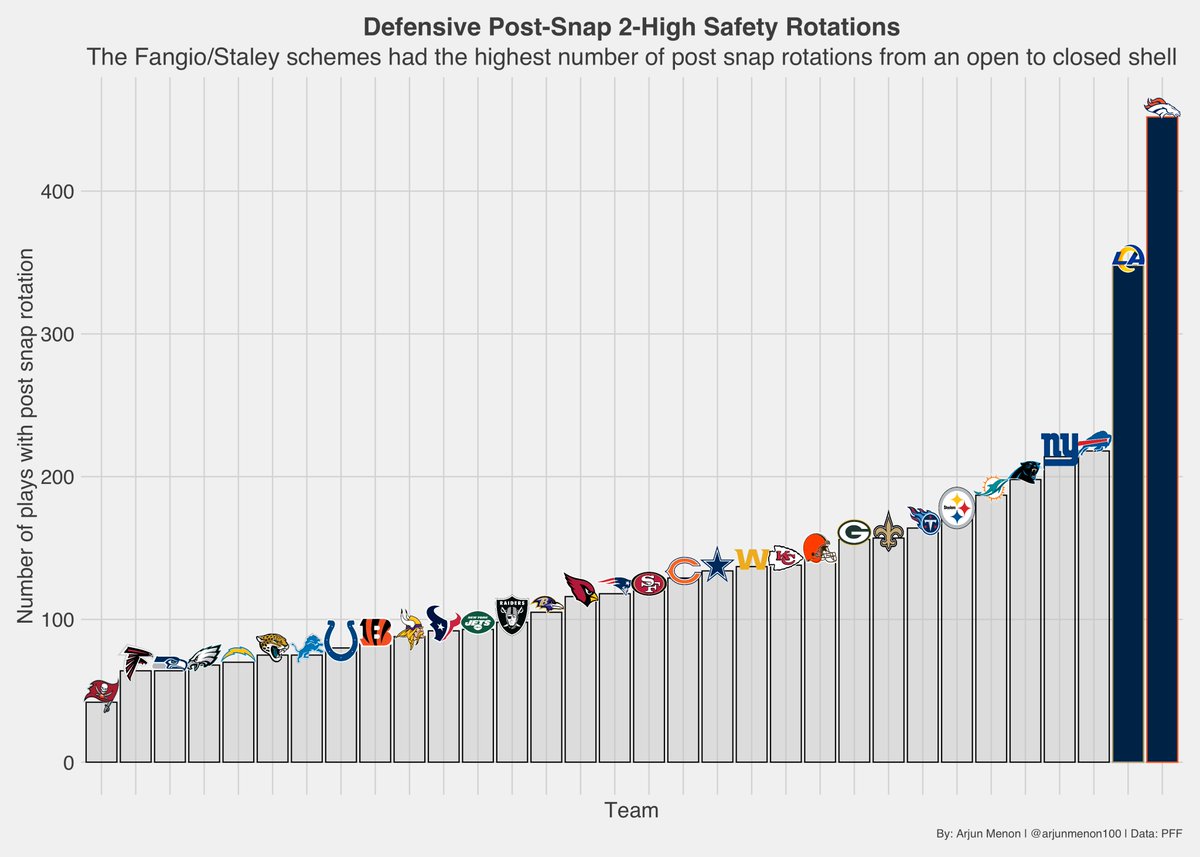
More than utilizing fewer box players in this contest — the Saints showed a pre-snap two-high coverage 60% of the time while Rodgers was in the game — Allen also schemed his defenders on the backside of runs “stay home” to deal with Rodgers should he pull the ball on play-action. Last year, Rodgers finished with the second-highest graded passer on play-action bootlegs, rollouts or keepers, posting a sterling 86.9 grade. The Saints were not going to let this happen again:
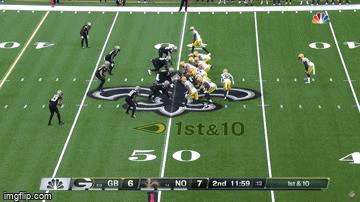
Playing a two-high safety shell and then telling the remaining box players to have eyes on the quarterback on run action can allow for big runs but with the Packers down early, it didn’t matter.
Rodgers attempted four play-action bootlegs against the Saints on Sunday — he was sacked once and completed just one of his three pass attempts, which came on a nifty counter play that the Packers hadn’t shown at all last season. More often than not, it looked like this:
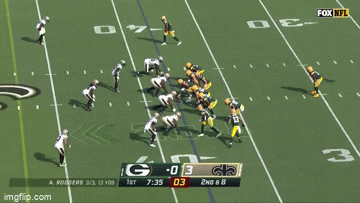
The defensive end plays Rodgers all the way while Demario Davis, from his linebacker spot, quickly chases down tight end Robert Tonyan.
On an important fourth-and-1, Saints defensive end Cameron Jordan stayed home and harassed Rodgers, forcing an incompletion and sealing the game for the Saints:
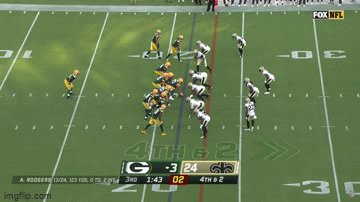
Because the Packers couldn’t run the ball to control the defense, it allowed the Saints to sit in their heavy pass coverages and dominate the Green Bay aerial attack.
A common theme in how they were able to stifle the Packers was how they played their “weak safety.” In a two-high system, the weak safety is the defender who is either to the short side of the field or to the side with fewer receivers.
First, when the Saints did want to spin down to a one-high defense, it was often the weak safety who rotated down late. A good example was the third-down stop that set up the fourth-down stop from above.
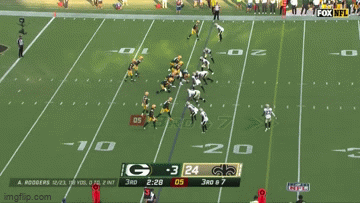
Against man coverage, the Packers created a bunch set to allow their best receiver to gain inside leverage and run across the field but the weak safety is waiting for him after he catches the ball, which stops any yards after the catch (YAC).
Next, the Saints were able to trick Rodgers in one of their actual two-high coverages.
In the second quarter on second-and-21, the Saints sat in their “stump” coverage, which is a quarters-based coverage where the MIKE (middle) linebacker — Davis — the nickel — Chauncey Gardner-Johnson — and the field safety — Malcolm Jenkins — are playing a three-over-two bracket against the Packers' slot receivers. Because it’s quarters-based, Jenkins has to pick up any deeper in-breaking routes.
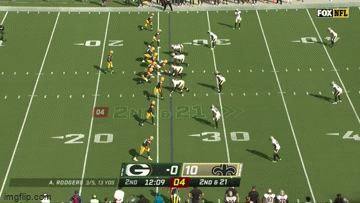
Rodgers looks to the weak side to hold the weak safety — Marcus Williams — and then throws to Davante Adams on the other side of the field. He partly thinks Davis will be watching Rodgers eyes’ but is instead trying to match routes. Rodgers may have missed Allen Lazard over the middle. We can see Jenkins giving that route with too much space, but it is his route to cover.
The Packers went to the sideline and devised a plan to beat that coverage. Have Jenkins drive on the same route while the other slot receiver runs a vertical route into the space Jenkins vacated. Furthermore, they put Adams on the weak side so that the safety would be forced to honor the dominant receiver. It’s a very good plan, and this is how it played out:
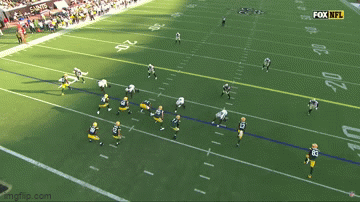
The Packers got exactly what they want, but Williams is no fool, a he read Rodgers’ eyes, and when the veteran signal-caller moved his eyes away from Williams, the safety wheeled to centerfield and caught the pop fly.
There were numerous examples of the Saints' different two-high presnap coverages defeating the Packers offense. They trapped Adams on his favored weakside option route early in the game and snuffed another Packer favorite — RB seam — later as well. The game script got away from the Packers early, which led to a dominant effort by Dennis Allen and the Saints defense because it enabled them to tee off knowing the Packers couldn’t focus on grinding out a run game against favorable looks.
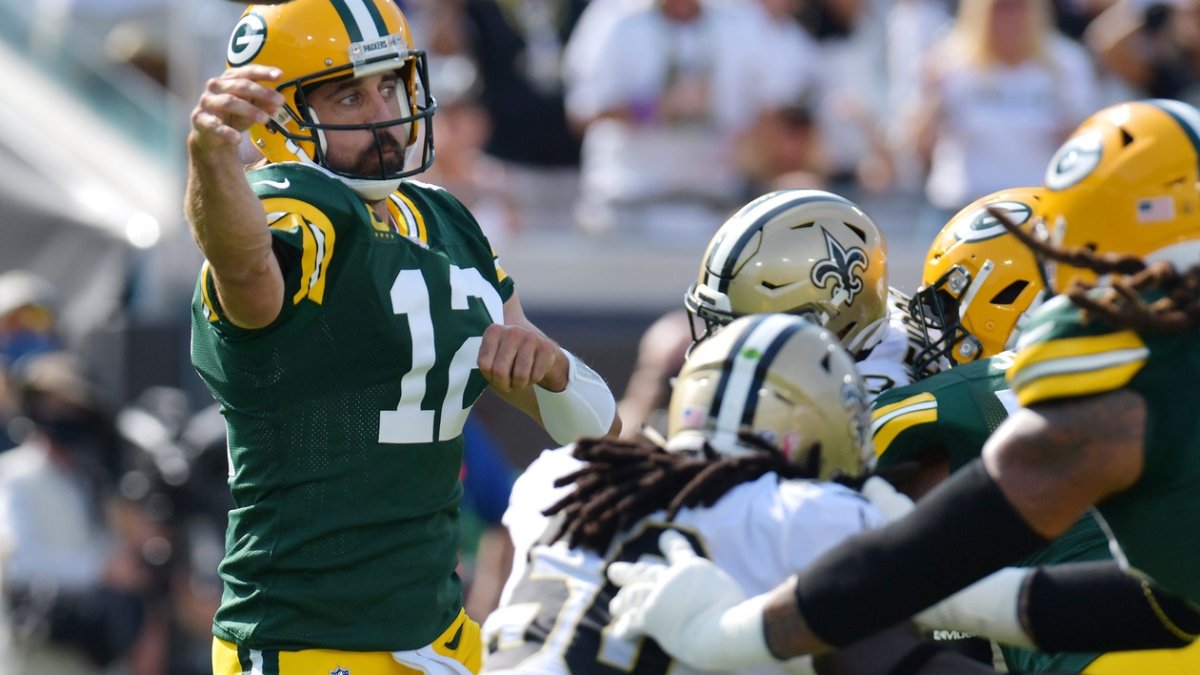


 © 2025 PFF - all rights reserved.
© 2025 PFF - all rights reserved.